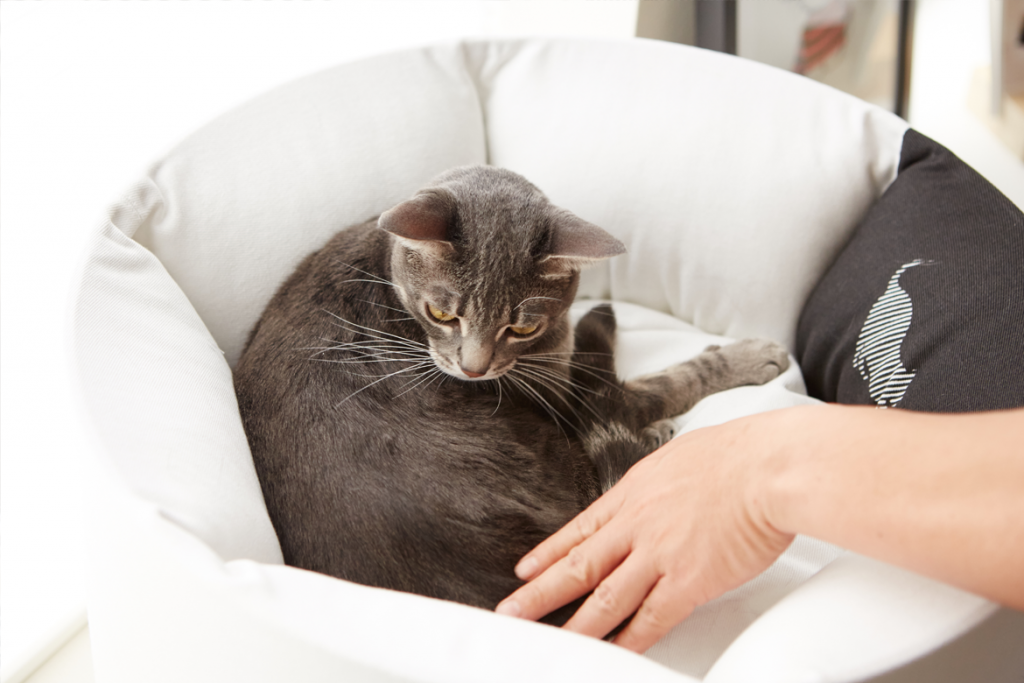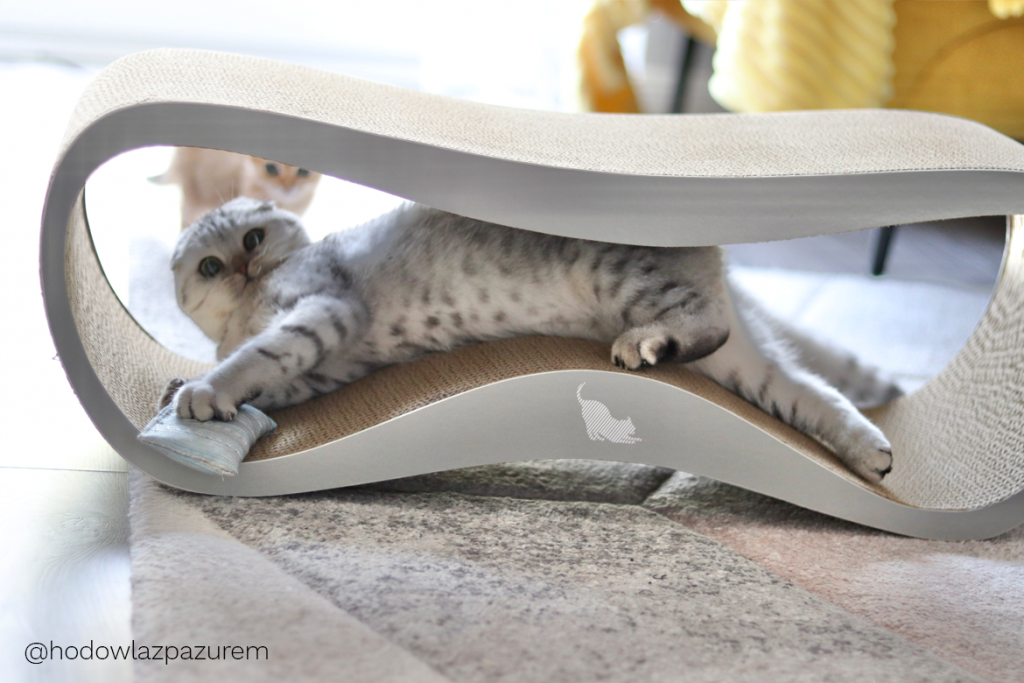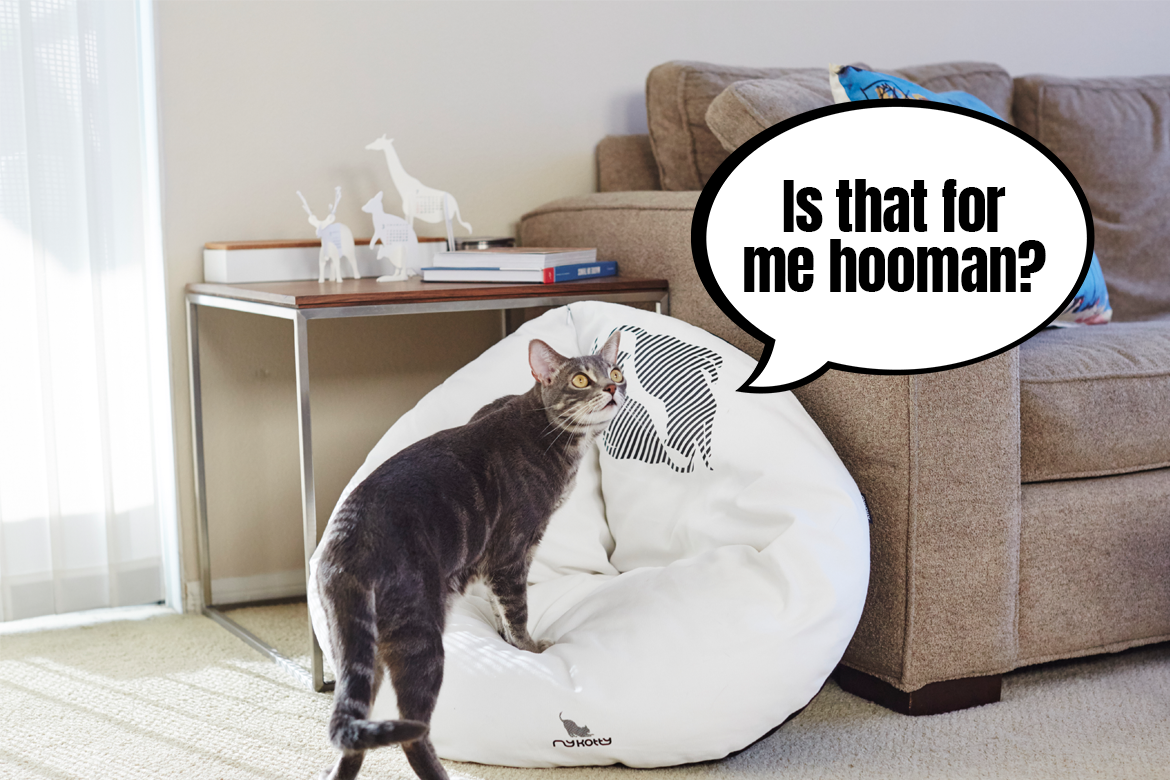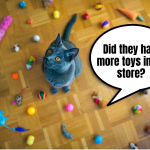Sometimes you ask us, dear fabCats, if there’s a way you can convince your cats to use their new scratchers, beds and cat furniture. The natural, first response would be obviously “don’t force anything!” – after all, we’re working with a cat here and, being a cat, he always strives to achieve independence and move at their own pace. But then, there’s time to reflect and the question appears – how can you get a cat used to new accessories, if he’s turning his whiskers up at them?
Although the majority of cats will immediately appreciate the durability, great quality, a fresh scratching surface and a comfy, soft spot for napping, some fluffy companions will require a little more encouragement. Cats are very territorial animals and every new object in their surroundings will bring up many emotions. We’re always writing down your questions, dear fabCats, to improve our brand communication levels. Today, we bundled them all into a handy, fabCatstic FAQ, based on your questions collected by our myKotty team throughout the years. With the answers, we hope to aid you with the process of getting your kitties used to their new furniture. Let’s get started!
My cat doesn’t use the new scratcher. What can I do?
Allow your cat to get used to the new piece
Cat personalities can be essentially divided into three categories: the curious, the timid and the indifferent. A curious cat will immediately approach any new box and package that arrives at home, checking what else might have been brought up for him by the courier this time. Convincing the curious cat to use a new scratcher or a cat bed shouldn’t be an issue. Curiosity always wins!
With an indifferent cat, the case might be a bit more difficult. A new box at home is a normal occurrence – nothing worth getting interested in. With the indifferent cat, we recommend you opening the box after it arrives and checking if the cat gets interested. If not, we will try to help you with some tips later in the article.
Unfortunately, among our fabCat followers there are cats, who on the sound of the doorbell and the sight of a big box go into hiding mode and leave their safe place after a long while, with a big dose of caution. In situations like this we recommend you wait a bit before opening the box – let your cat get accustomed to the package, let him smell and accept it on his own terms. Do the same once you open the box up and take the new scratcher or cat bed out. Time is your biggest ally here.
Cat isn’t interested in his new cat bed. What to do about it?
Choose the right spot
Placing new accessories in the right places is the foundation of feline feng shui. Whether we talk about a scratcher, a cat bed or a cardboard house – if it’s in the wrong spot, your cat can walk right past it with complete lack of interest. We encourage you, dear fabCats, to experiment, try things out and rearrange!
- Scratchers. The best spot would be any place, where the scratcher acts as an at-home signpost. It will work perfectly by the couch, the window or anywhere, where your cat naturally chooses to sit or lay down. Remember that myKotty scratchers are not just a place to scratch and play, but also a great resting spot. If your cat loves napping on the scratcher, it’s a great idea to set it in a more secluded area of the house, but if they use it to get crazy and scratch like a mad man, switch the place to one that’s more available for such activities. The bigger models (VIGO and LUI) will work and look great on the floor, while TOBI fits just as well on the desk, a wide window sill, a shelf or a chest of drawers.
- Cardboard houses. As relaxing spots, cat houses fit best in places where your kitty loves to rest or where they didn’t have a great hideout before. A house is there to provide your kitty a sense of peace and safety, so it shouldn’t be put right in the middle of a busy traffic route of the house, where people would always be stomping around it.
If your cat doesn’t like the current spot for the cat house, try moving it to your bedroom, set it by the balcony (as a great observation post) or in another, quiet area of the house. In our MIA cat house we decided to put two entrances, one slightly higher than the other. For some cats it’s enough to turn the house around and they’ll be much more willing to get inside!
- Cat beds give you the most rearrangement options – cats like sleeping anywhere, so let’s use it. Smaller pillows (e.g. our PADI pillow) work well on shelves, desks and chests of drawers and, if your cat loves the couch a lot, just where he naturally falls asleep. A familiar spot will definitely ease the kitty into getting used to the new item. Bigger cat beds will work better on the couch or the floor, especially if they’re constructed to sit a little bit above the ground (like our OTI bed). A cat bed like this could work well right by the balcony or the radiator, where your kitty can safely observe the world and keep warm.
Give your cat a sense of security
New additions to a cat’s territory are unfamiliar and can be treated as intruders. If, on top of that, we move them to a spot where your kitty can’t feel 100% safe and comfortable, we won’t be able to convince him to take a sweet, peaceful nap on an unknown ground. What should you avoid?
- Don’t place the new scratcher in the walkway, right in the centre of the home lane of traffic.
- Don’t put the cat bed on the couch, if your doggy has access to it and the cat is always shooed off
- Don’t put the cat house in a tight corner, where he’ll only have access to one entrance – if there’s two or more cats in the house, it creates unnecessary dead ends and the house may become a point of contention, leading to your cats fighting for resources.
- Don’t place the scratchers and cat beds where they can’t be stable and sturdy – your kitty needs a solid ground under the paws.
When adding new elements to a cat’s territory, you should always pick spots where your kitty can safely and comfortably get into a scratching session or a nap. Observe in which parts of the house your cat usually relaxes or gets into a play mood, then start rearranging your house to put the new cat furniture right in those spots.
Create a cat superhighway
Including the new scratcher, cat bed or cardboard house into the existing cat highway can help the kitties who love patrolling the perimeter of the house and their territory. After the initial reaction to the new piece, your cat will see and learn that the furniture is there to help him get to the next spot on his route. If they avoid the scratcher or cat bed, which breaks up the cat highway, it’s obviously wise to remove the new piece and try other methods of encouraging your kitty another way. If you do manage to put a new scratcher or a cat bed on a chest of drawers or a shelf that your cat always uses to get further and higher, even the act of walking through it is a good step worth rewarding for.
What can you do, when a cat walks away from the scratcher looking dissatisfied?
Try scent-soaking the new furniture
Staying on the topic of cat’s sense of security, transferring their scent to the new furniture can help with the process of encouraging a cat to try it out and, with time, love it. Any new product has a smell of the factory, fresh corrugated cardboard or other scent – for some kitties, it may encourage them to get curious and sniff, for others it will completely block their trust and sense of safety. As far as the second group goes, we recommend being patient – let the new thing settle in and soak the scent of the house. In the meantime, try to transfer some of your cat’s scent onto the scratcher or the cat bed, even without actually involving the cat. How can you do that?
Check your cat’s regular sleeping spots – the window sill, the couch or the carrier for your cat’s favourite blanket, pillow or a towel and put it temporarily in the new cat house. You can do the same with a new cat bed. A familiar element will strengthen your cat’s sense of security and allow them to use the new furniture from the very first day. As far as scratchers go, transferring scents is a little bit more tricky, but not impossible! After a brushing session, collect the loose fur from the brush and gently rub it over the surface of the scratcher, lay your cat’s blanket on top (maybe your kitty will use it as a sleeping place first) or use the piece as a playtime spot – we’ll go back to this method later on in the fabCatstic FAQ.

My cat notices the new cat bed only when hoomans are near. How to encourage them to use it by themselves?
Become a cat and see the world from their perspective
Some cats are motivated by treats, others by play, and some of them need a close connection with their hoomans. If your fluffy follows you around everywhere and feels secure in your company, use it! Sit beside the scratcher, allow your cat to come closer and try to scratch the new furniture yourself – show the cat what the piece is for. As another task, you can scratch the surface while the cat is not around. The sound of gently rubbing the corrugated cardboard will most certainly attract your kitty’s attention. If you want to encourage a cat to use the MIA cat house, you can put your own t-shirt or blanket inside. For bigger cat beds… just lay on them yourself. Our EMI pillow is loved not only by kitties, but many of our fabCats as well (and we have your photos to prove it! 🙂
A shy cat approaches everything with caution. How to convince them of something new?
Create positive associations
Do you want your cat to use a new cat bed or a scratcher and feel really good? Nothing works quite as well as rewards and positive connotations. If your kitty is already interested in the new piece, they’re sniffing it and walking around but not certain enough to get on top, try rewarding them for every contact and attempt that they take. If there’s a treat incentive that gets him onto the scratcher – success! Reward, then try again.
Rewarding a cat each time they get interested and come close to the scratcher helps associating the new piece with pleasure and prize. Remember that the gratification can also be verbal. Start out by using it together with treats and later use words on their own, praising the cat every time he shows up around the scratcher, gets onto it or actually scratches. You won’t even notice the point where complete indifference turns into a true love for the new piece of furniture.

Treats don’t work. Cat gets onto the scratchers, takes the snack and runs away. How can I work around them?
Use the scratcher during playtime
As far as methods of encouraging cats to use new products go, playtime is a true gem. If your kitty is not interested in the scratcher, the cat house or the cat bed, setting it in a strategic spot, taking a wand toy and going through the new furniture with it can work wonders. In the midst of playing, a cat will gladly use the new house as a hideout before the attack, a scratcher as a stepping stool to reach the wand flying away or the cat bed to roll around on and catch the string moving above the head. In the meantime, your cat will be leaving his scent behind, which will work in your favour.
The playtime method has one more role when it comes to scratchers – while catching a string, your cat will definitely put their claws into the surface of the scratcher more than once. Our experience tells us that once a cat scratches and likes it, they will turn the playtime into a whole session of nail sharpening!
Remember, fabCat, that a playtime session won’t always give you instant results. Beside pairing it up with other methods, one key factor here is routine. Try playing with your cat by the scratcher or the cat bed for a little bit, even up to 10 minutes a day, everyday. After a few days he should know what the new furniture is there for. After playtime, to finish the hunting cycle correctly, you can give your cat treats served on top of the new piece.

Use the magic of catnip and other aromeowtic herbs
We complete our list with the well-known and always recommended catnip (and other aromeowtic herbs, e.g. valerian). Using them is a great idea for cats who love them and will react positively to this type of stimulation. There’s a catch, though. Catnip can affect cats differently – some will get excited and hyped, while others can get sleepy or irritated and discouraged. To use catnip as a tool, you have to know your kitty well, as it can go the opposite way of what you expected. If the catnip scent gets your cat excited, do you really want to use it on a cat bed that’s supposed to be used for napping and relaxing? Or on a scratcher, which your cat could start using as a place to rub against and sleep on, not to scratch? Your cat can also get irritated and restless after catnip, and start associating those feelings with the new piece. Our fabCat advice is to use catnip sparingly, if nothing else does the trick.
What methods did work for you, dear fabCats, when you tried getting your cats used to new furniture and scratchers? Did a soft cat bed or a cardboard cat house get accepted immediately, or did they require some creativity and many attempts to get your cat interested? Or maybe you have already tried some methods on our list and had success with them? Let us know in the comments and remember – patience is key and cat’s curiosity paired with proper encouragement always wins.




